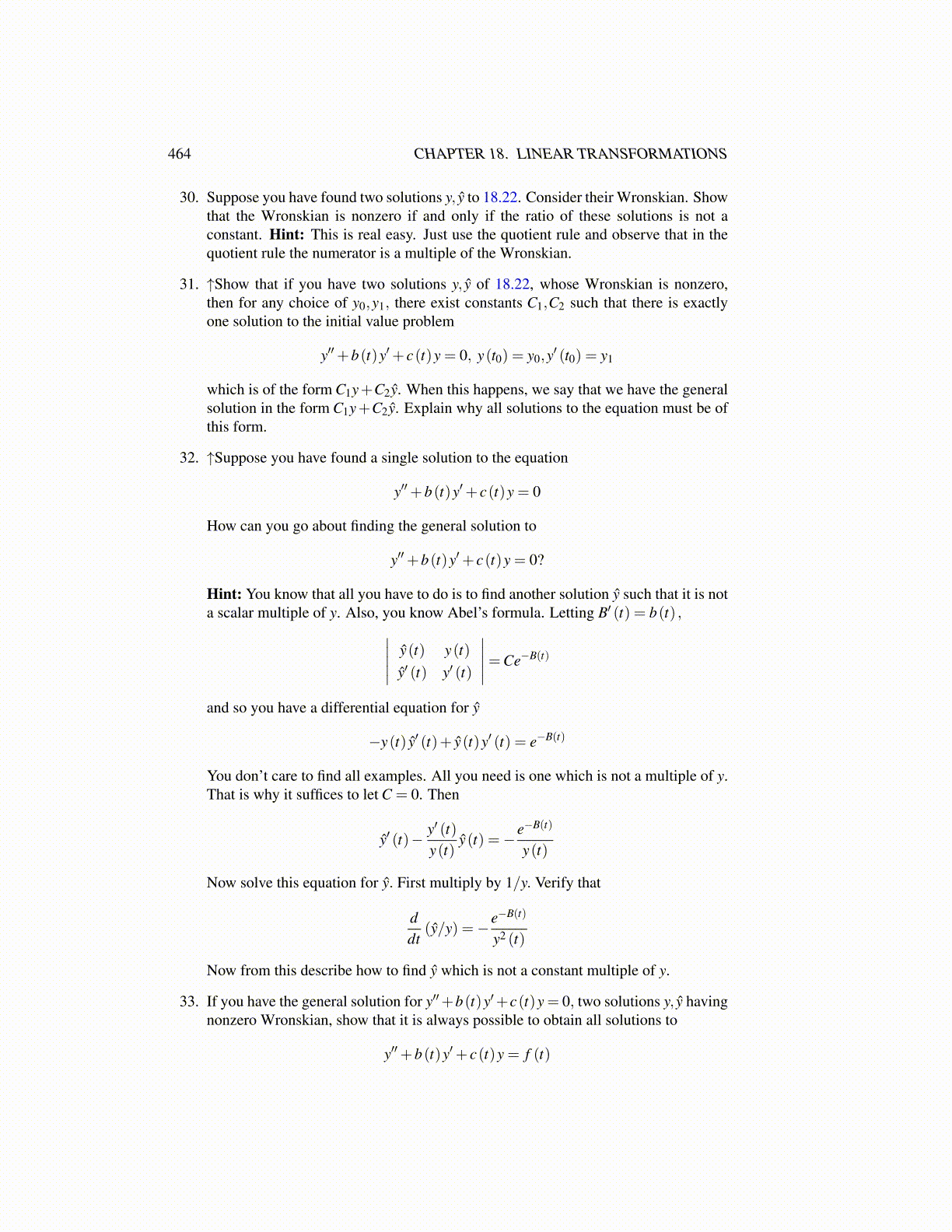
464 CHAPTER 18. LINEAR TRANSFORMATIONS
30. Suppose you have found two solutions y, ŷ to 18.22. Consider their Wronskian. Showthat the Wronskian is nonzero if and only if the ratio of these solutions is not aconstant. Hint: This is real easy. Just use the quotient rule and observe that in thequotient rule the numerator is a multiple of the Wronskian.
31. ↑Show that if you have two solutions y, ŷ of 18.22, whose Wronskian is nonzero,then for any choice of y0,y1, there exist constants C1,C2 such that there is exactlyone solution to the initial value problem
y′′+b(t)y′+ c(t)y = 0, y(t0) = y0,y′ (t0) = y1
which is of the form C1y+C2ŷ. When this happens, we say that we have the generalsolution in the form C1y+C2ŷ. Explain why all solutions to the equation must be ofthis form.
32. ↑Suppose you have found a single solution to the equation
y′′+b(t)y′+ c(t)y = 0
How can you go about finding the general solution to
y′′+b(t)y′+ c(t)y = 0?
Hint: You know that all you have to do is to find another solution ŷ such that it is nota scalar multiple of y. Also, you know Abel’s formula. Letting B′ (t) = b(t) ,∣∣∣∣∣ ŷ(t) y(t)
ŷ′ (t) y′ (t)
∣∣∣∣∣=Ce−B(t)
and so you have a differential equation for ŷ
−y(t) ŷ′ (t)+ ŷ(t)y′ (t) = e−B(t)
You don’t care to find all examples. All you need is one which is not a multiple of y.That is why it suffices to let C = 0. Then
ŷ′ (t)− y′ (t)y(t)
ŷ(t) =−e−B(t)
y(t)
Now solve this equation for ŷ. First multiply by 1/y. Verify that
ddt
(ŷ/y) =−e−B(t)
y2 (t)
Now from this describe how to find ŷ which is not a constant multiple of y.
33. If you have the general solution for y′′+b(t)y′+c(t)y = 0, two solutions y, ŷ havingnonzero Wronskian, show that it is always possible to obtain all solutions to
y′′+b(t)y′+ c(t)y = f (t)